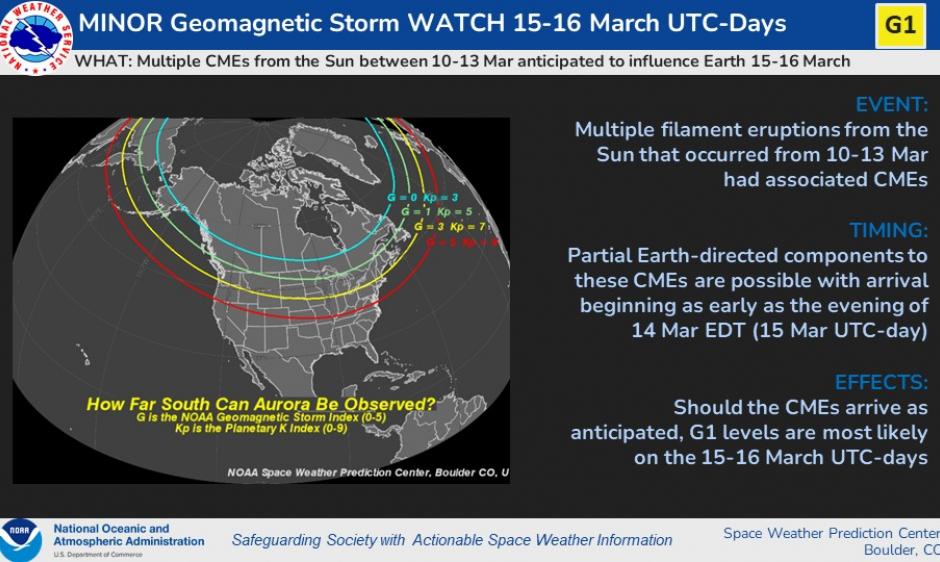
G1 (Minor) storm watches are in effect for the 15-16 March, 2023, UTC-days. The watches are due to multiple CMEs (coronal mass ejections) that departed the Sun between 10-13 March. These CMEs were associated with eruptive solar filaments and are moving at various speeds between 400-1000 km/s. While most solar material is likely to miss Earth, analysis and model results varied widely. Still, the general consensus is multiple CME arrivals mainly from 15-16 March as potential glancing blows. The complexities with some of these CMEs and their proximity to Earth or flanking influences lead to the likelihood of enhancements in the solar wind field. Forecast confidence in geomagnetic disturbances associated with the CME arrivals is fair, however, certainty in disturbance levels is less. The NOAA DSCOVR spacecraft that monitors the solar wind field about a million miles away (between the Sun and Earth) will be the first to detect any real-time solar wind changes due to CME passages. Continue to visit our webpage for the latest information, forecasts, warnings, and updates.